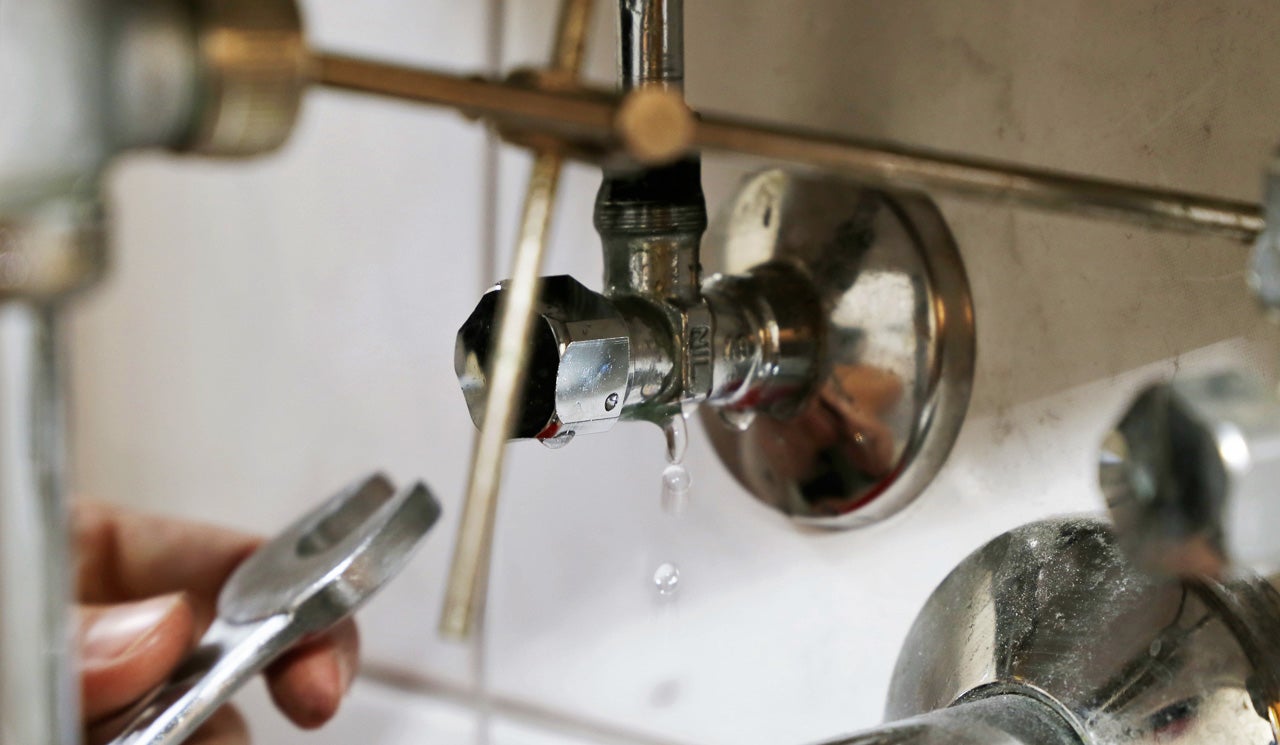How to Find and Repair Work Water Leaks-- A Comprehensive Overview
How to Find and Repair Work Water Leaks-- A Comprehensive Overview
Blog Article
The writer is making a number of good pointers relating to Locating water leaks in general in the content following next.
.jpg)
Early discovery of dripping water lines can alleviate a possible catastrophe. Some small water leaks might not be visible.
1. Check Out the Water Meter
Every residence has a water meter. Examining it is a surefire manner in which aids you discover leaks. For starters, switch off all the water sources. Make sure nobody will flush, utilize the tap, shower, run the cleaning maker or dish washer. From there, most likely to the meter and watch if it will certainly change. Because no person is utilizing it, there should be no motions. That indicates a fast-moving leakage if it relocates. Furthermore, if you spot no changes, wait a hr or 2 and also examine back again. This suggests you might have a slow leak that might even be underground.
2. Inspect Water Usage
If you spot abrupt changes, regardless of your usage being the same, it indicates that you have leaks in your plumbing system. An unexpected spike in your expense shows a fast-moving leak.
Meanwhile, a steady increase on a monthly basis, despite having the exact same routines, reveals you have a slow-moving leakage that's also slowly rising. Call a plumber to completely check your residential property, particularly if you really feel a warm location on your floor with piping underneath.
3. Do a Food Coloring Examination
When it comes to water intake, 30% comes from toilets. If the color in some way infiltrates your bowl during that time without flushing, there's a leak between the tank as well as bowl.
4. Asses Exterior Lines
Don't neglect to examine your outdoor water lines too. Must water permeate out of the connection, you have a loose rubber gasket. One small leak can waste heaps of water and increase your water expense.
5. Inspect and also Assess the Circumstance
Home owners ought to make it a behavior to check under the sink counters as well as also inside cabinets for any bad odor or mold development. These 2 red flags indicate a leak so prompt interest is needed. Doing regular inspections, also bi-annually, can save you from a significant issue.
Much more significantly, if you know your home is currently old, maintain a watchful eye on your heating systems, hose pipes, pipelines etc. Look for stainings as well as compromising as many home appliances and also pipelines have a life expectancy. They will certainly also normally wear away due to tear and also put on. Do not wait for it to escalate if you think leaking water lines in your plumbing system. Call a professional plumber immediately so you don't end up with a terrible mess in your home.
Early detection of leaking water lines can alleviate a possible disaster. Some little water leakages might not be noticeable. Inspecting it is a proven way that aids you find leaks. One little leak can lose heaps of water and also surge your water costs.
If you think dripping water lines in your plumbing system, don't wait for it to escalate.
How to Know If Your Home Has a Hidden Leak
Water Meter Reveals Inexplicable Water Usage
If you’d like to test whether or not there’s a leak somewhere in your home, you can do this using your water meter. Here is how to conduct the test:
Don’t use any water in your home for at least 30 minutes; this also means not turning on faucets or water-using appliances.
Go outside, and check your water meter for activity.
If your water meter shows that there was activity, even though no one was using any water, this proves that there is a leak in your home.Visible Mold or Mildew Growth
Leaks behind walls create moist, dark environments that allow mold and mildew to grow and thrive. Eventually, you might see mold growth forming on the wall closest to a hidden leak.
If mold is growing in an area that receives a high amount of moisture, such as a bathroom, it may simply be an indication that better ventilation is needed. However, if you see mold growth on a wall or the ceiling in an area where you would not expect, you probably have a hidden leak.
Musty, Mildew Odor
Sometimes you might not be able to see the mold or mildew that is growing as a result of a leak. However, the smell can give the problem away just as easily. If you catch a whiff of something musty, there’s a good chance that old water is collecting somewhere in your home that you can’t see.
Stained/Warped Walls, Ceilings, or Floors
When your home soaks up water, a variety of red flags can become visible, including ceiling stains, bubbling drywall, warped walls, and sagging floors. While these issues can be caused by excess humidity, they can also be signs that a pipe or plumbing connection has started leaking behind your walls.
Inexplicably High Water Bill
After a while, you get a general sense for what your water bill should be. If you own a pool or sprinkler system, your bill will tend to be higher during summer. However, if you receive a water bill that seems especially high, and you can’t figure out what caused it, then you may have a hidden leak somewhere that’s increasing your bill.
https://www.plumbingjoint.com/blog/2019/july/how-to-know-if-your-home-has-a-hidden-leak/

We hope you liked our excerpt about Detecting hidden plumbing leaks. Thanks so much for taking the time to browse our short article. Those who appreciated our blog entry if you please be sure to share it. I praise you for your time. Visit us again soon.
Report this page